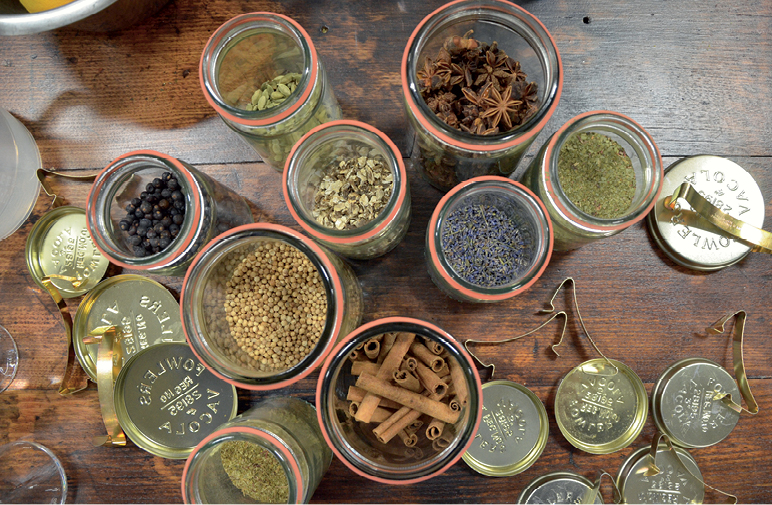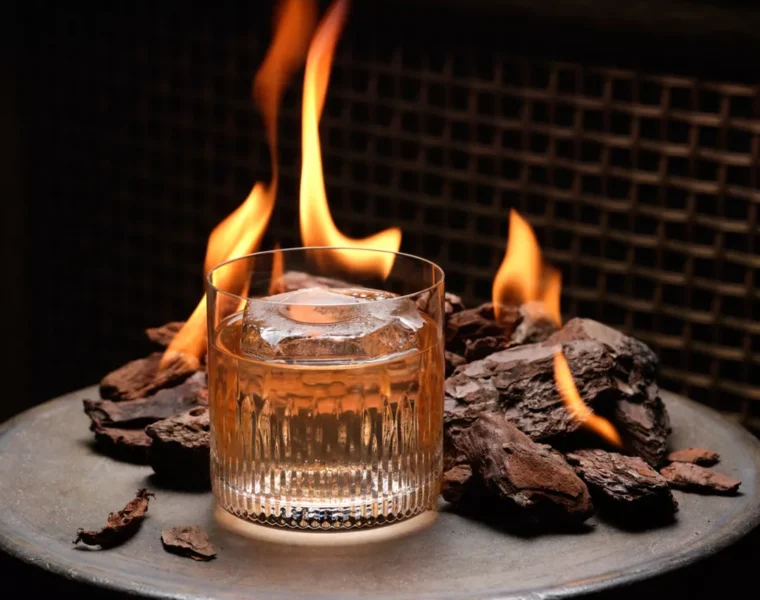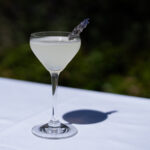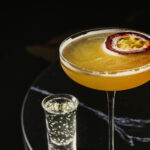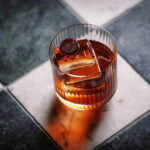Gin is the descendant of the Dutch spirit genever, however whereas gin is made with highly refined neutral spirit, genever is made from a distillate comprised of corn, rye, malted barley and distilled to a much lower ABV percentage, resulting in more congeners.
Production
We’ll talk chiefly about the London dry style here.
Gin is made by flavouring high proof neutral spirit (around 96 per cent ABV) with a range of botanicals, chief among them being juniper.
There are a couple of ways of extracting the flavours and aromas of the botanicals.
Maceration: by steeping the botanicals in the spirit before distilling, some of the aroma compounds and essential oils are extracted (longer maceration produces a more full-flavoured spirit). This is best for hard botanicals (like orris root and angelica).
Vapour infusion: this involves placing botanicals in a basket at the top of the still so that that as the vapours boil off the spirit they pass through the botanicals releasing their oils and aromas, before being condensed later in the process. This is suitable for more delicate botanicals like lavender.
Botanicals
As noted the chief botanical in gin is juniper. This is traditionally supplemented by coriander seed, orris root, angelica and citrus peel. In many new western style gins, the cast of botanicals has grown widely.
Styles
London dry gin: only 0.1g of sugar per litre is allowed, no artificial colourings or flavours are permitted and it must be distilled to greater than 70 per cent ABV.
Old Tom gin: sweeter than London dry gin, though there are no legal rules on what can and can’t be labelled as an Old Tom gin. This sweeter style was popular before Prohibition and would have been found in the Martinez back in Jerry Thomas’ day.
New Western gin: Anything goes, really. Often the cast of botanicals leads to a more citrusy or floral gin, with juniper less in the foreground.
Plymouth gin: essentially the same as London dry gin (Plymouth Gin is the only example currently being produced) except that it can only be distilled in Plymouth, England.
How to serve it
The classic serve is in a Gin and Tonic. Use plenty of gin, and don’t drown it in tonic. You want to taste the juniper: a good rule of thumb is 1 part gin to 3-4 parts tonic.
Gin forms the basis for a number of classic cocktails — check out the classics from page 40 for more.

